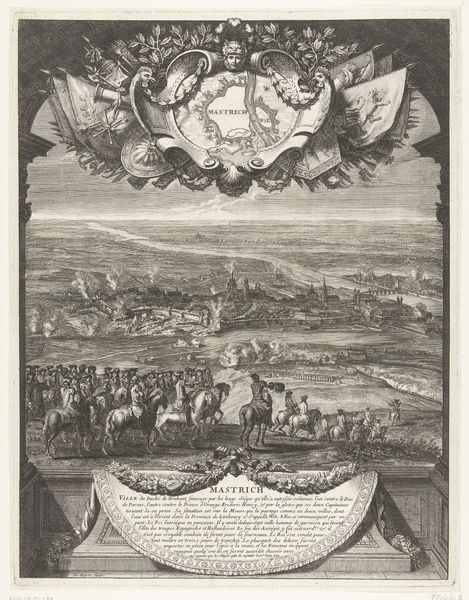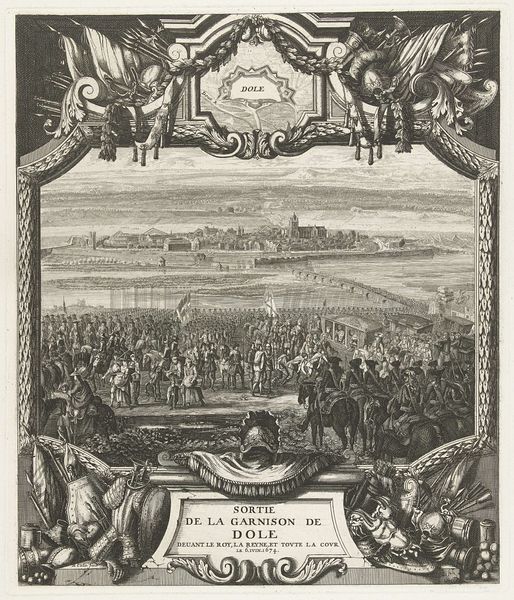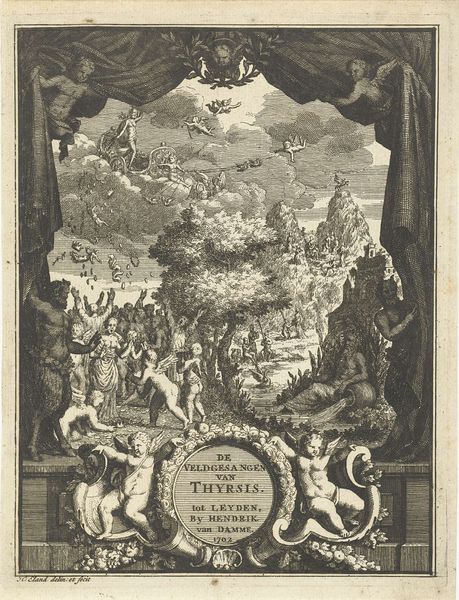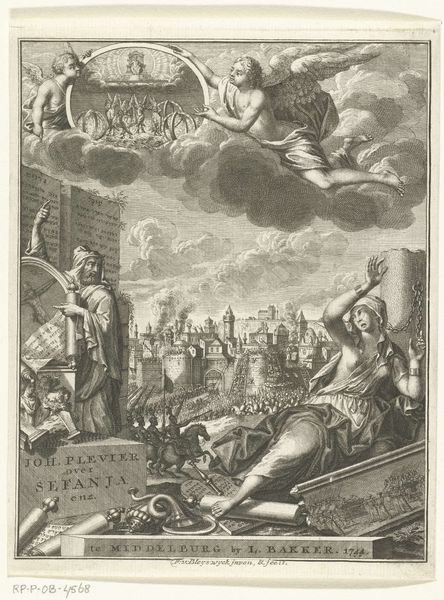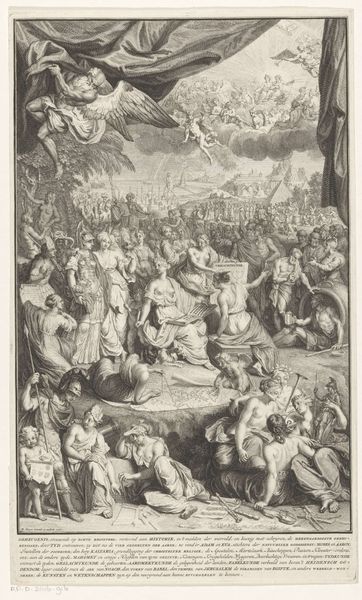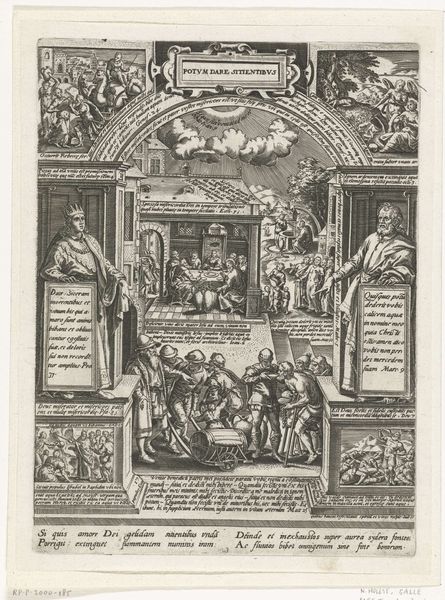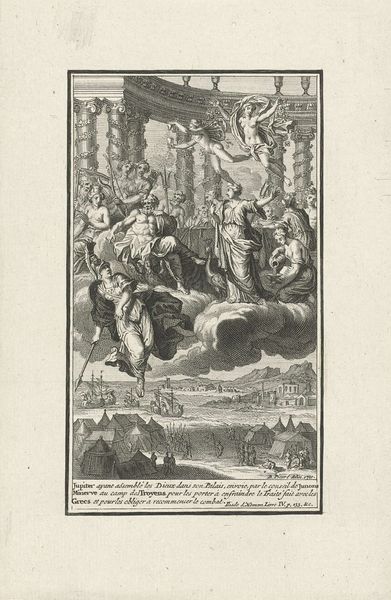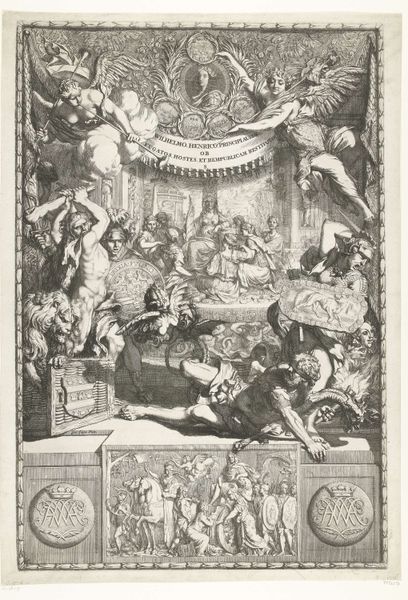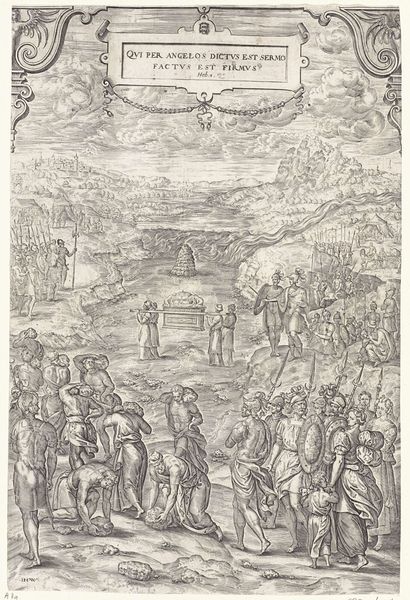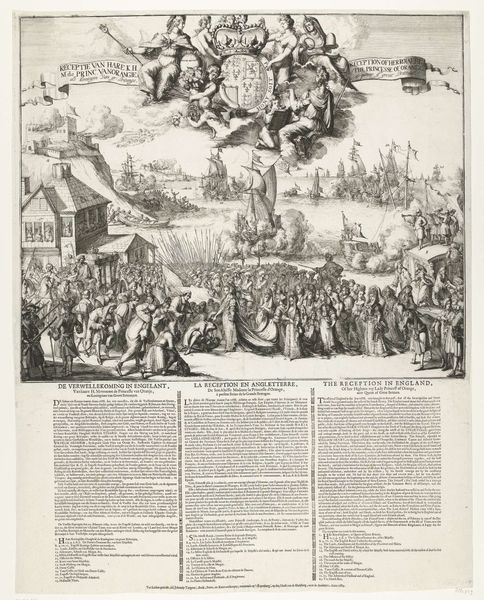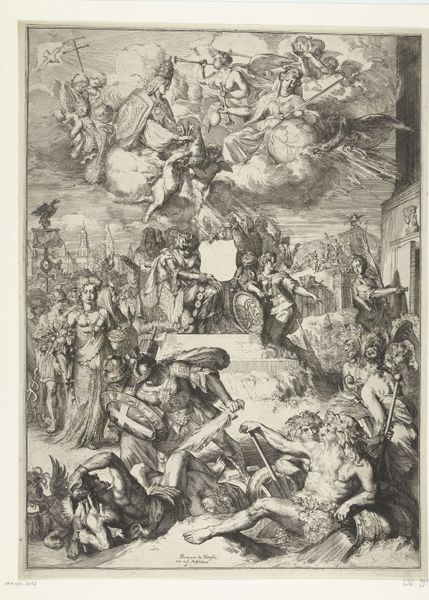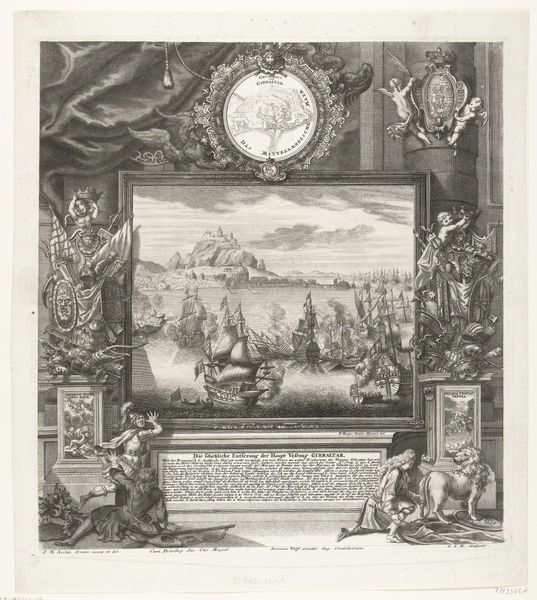
print, engraving
#
baroque
#
pen drawing
# print
#
cityscape
#
history-painting
#
engraving
Dimensions: height 418 mm, width 361 mm
Copyright: Rijks Museum: Open Domain
Curator: The initial feeling I have is of meticulously ordered chaos. Editor: You’ve keyed right into it! We’re looking at "Verovering van Yperen door de Fransen op 26 maart 1678," or “Conquest of Ypres by the French on March 26, 1678." Created sometime between 1683 and 1694 by Daniël Marot, this print, an engraving to be exact, commemorates a key historical event. What stands out to you beyond that initial impression? Curator: Well, the use of a high vantage point. It grants an almost god-like perspective. I immediately see not just the battle, but also a depiction of power, authority, and claim to ownership over this city. Editor: It's fascinating how Marot uses perspective to convey the scale of the event and the power dynamics. The French army’s conquest isn’t just a battle; it’s a political statement etched into the landscape itself. What else do you see in terms of symbols? Curator: The decorative elements. Look at the curtains drawn back to reveal the scene, and the sculpted figures. The whole print feels performative, almost staged. The figures in the lower part… the shield with inscription.. It's clearly about justifying a specific historical narrative, the greatness of the French crown, rather than portraying a factual battle. Editor: Precisely! Baroque prints like this were propaganda as much as they were documentation. The grandeur isn’t just artistic flourish; it's calculated to impress and persuade. Think about how such imagery would circulate, shaping public opinion. Curator: So, a memory meticulously manufactured through symbols and imagery? I can definitely appreciate how prints like this build an argument, carefully structuring perspective to convey a sense of destiny and entitlement, using visual vocabulary understood by its intended audience. Editor: Exactly. Analyzing it in this light helps us understand its function beyond pure aesthetics— it was instrumental in constructing a particular version of history. Curator: Thank you. It allows one to view the piece and the period itself through an entirely new lens. Editor: Indeed! This helps understand not only the artwork, but the forces it was subject to, in a clearer fashion.
Comments
No comments
Be the first to comment and join the conversation on the ultimate creative platform.
